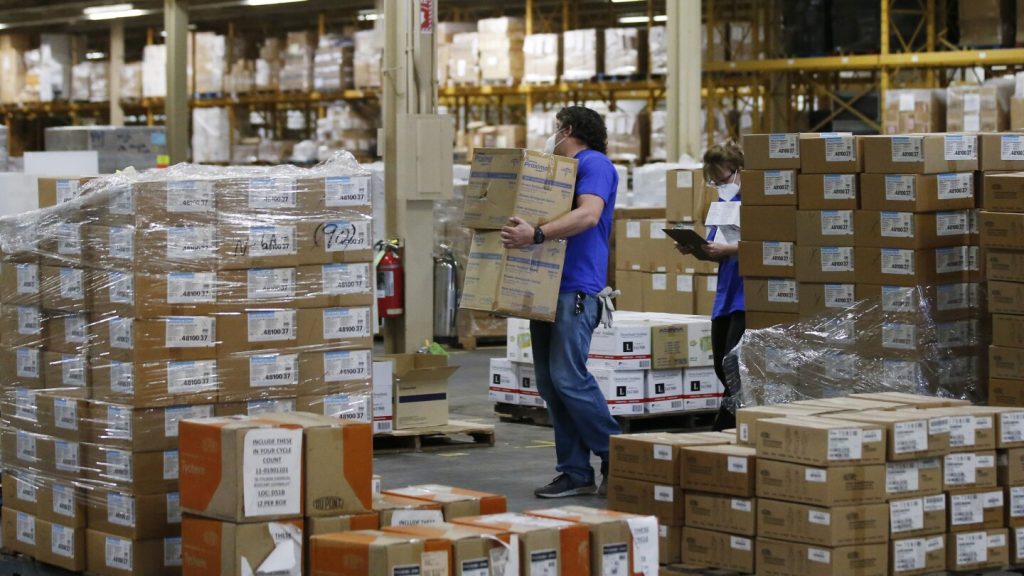The purchase of medical gowns by six U.S. companies has been announced, with a commitment to spend at least $350 million to manufacture these gowns for the Strategic National Stockpile. This move comes years after health care workers faced shortages of personal protective equipment during the COVID-19 pandemic. Prior to the crisis, the stockpile had not been regularly restocked, leading to its depletion in the early stages of the pandemic. The Administration for Strategic Preparedness and Response has been working to replenish the emergency supplies in recent years to prevent a similar situation from occurring again.
Various U.S. companies, including a California lacrosse equipment maker and a New York embroidery studio, have been chosen to manufacture the gowns as part of this initiative. It is projected that around 250 million gowns will be produced under this deal, ensuring that the stockpile will have a 90-day supply of gowns in the event of another emergency. In addition to gowns, the stockpile has already accumulated large quantities of gloves and masks. The Strategic National Stockpile is vital for ensuring a ready supply of medicines, vaccines, equipment, and supplies during disasters and pandemics, a function that was not fully realized during the early days of the COVID-19 outbreak.
The COVID-19 pandemic highlighted significant shortcomings in the preparedness and response capabilities of the United States, as healthcare workers struggled to obtain adequate protective gear. Trash bags were used as makeshift gowns, and cloth masks became the norm due to the shortage of medical-grade masks. Some companies took advantage of the situation by inflating prices for essential medical supplies, while states were left to fend for themselves in acquiring the necessary equipment. The lack of coordination and support from the federal government forced states to make panic purchases, resulting in some states being left with excess and poor-quality supplies.
An Associated Press investigation revealed that many states have disposed of millions of gloves, masks, and gowns in recent months due to poor quality or expiration. The lack of a coordinated federal response left states to make hasty and sometimes ineffective purchases in the midst of the crisis. Assistant Secretary Dawn O’Connell acknowledged the challenges faced by states during the pandemic and emphasized the need for better coordination and planning in future emergencies. The efforts to restock the Strategic National Stockpile are a step towards ensuring that the country is better prepared for future crises and can respond effectively to protect the health and safety of its citizens.
The commitment by six U.S. companies to manufacture medical gowns for the Strategic National Stockpile represents a significant investment in the country’s preparedness and response capabilities. With the goal of preventing shortages of personal protective equipment like those experienced during the COVID-19 pandemic, this initiative is aimed at ensuring that frontline healthcare workers have access to the necessary gear to protect themselves and others during emergencies. By diversifying the sources of production and increasing the stockpile of essential supplies, the government is taking proactive steps to mitigate the impact of future health crises and safeguard public health. The lessons learned from the challenges of the past year are driving efforts to build a stronger and more resilient healthcare system that can effectively handle emergencies while prioritizing the safety and well-being of those on the frontlines.


